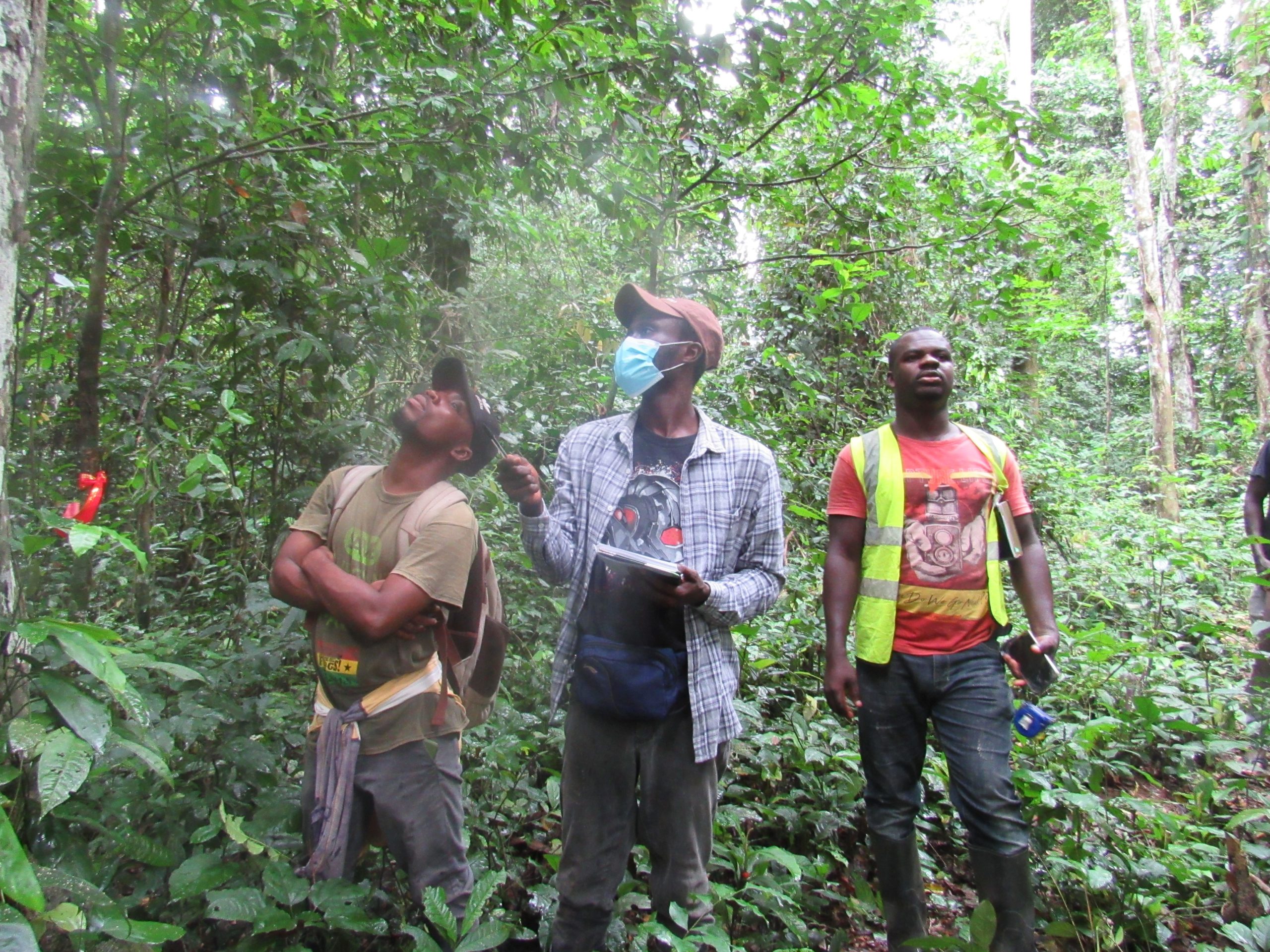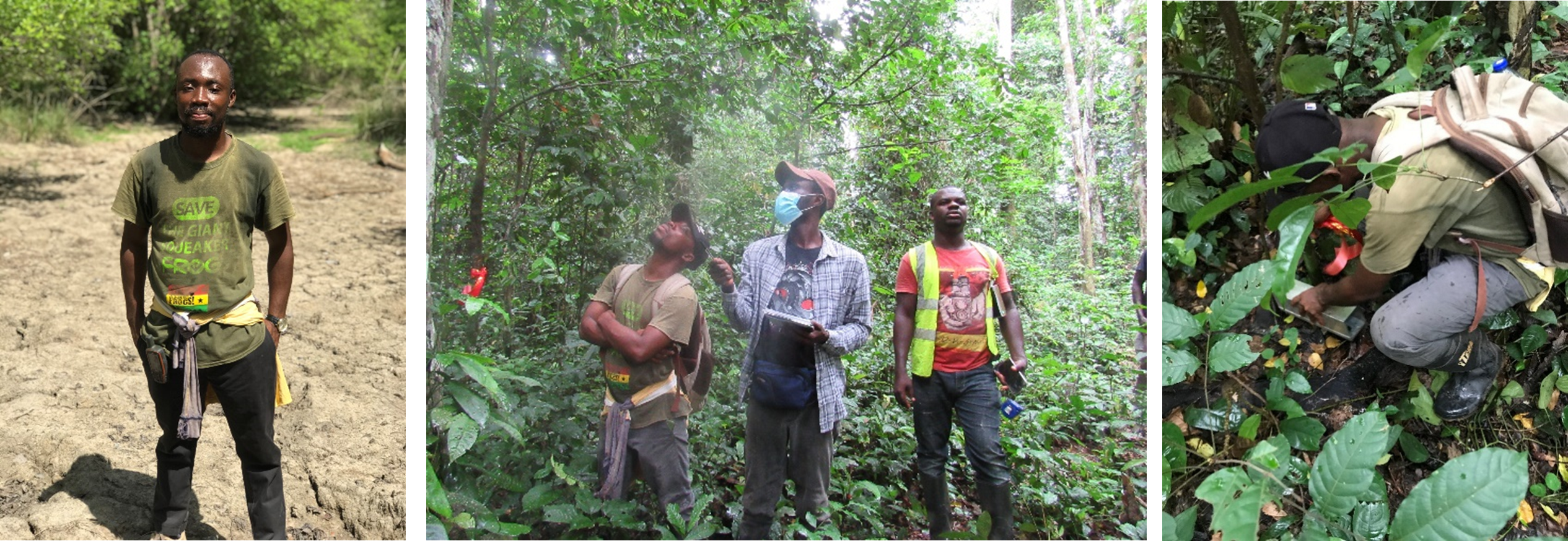
Baer’s Wood Mouse (Hylomyscus baeri) has been scarcely studied. It was officially described in the 1960s but is still only known from a few localities in West Africa. This species is listed as Endangered in the most recent IUCN Red List assessment, given that it has only been found in small area where it is declining in number and losing habitat.
This distinctive, tawny brown mouse is larger than its more common cousin, the West African Wood Mouse (H. simus), with a white underbelly bordered with a yellowish line of fur, long slender tail and comparatively large eyes and ears. It has only been formally recorded a handful of times in Ghana and Côte d’Ivoire, with single records also known from Sierra Leone and Guinea. It has been found in secondary forest, forest edge and plantations and, more recently, swamp forest. We know little more about this species’ ecology or life history.

Baer’s Wood Mouse depicted in Wilson et al. 2017.
We are pleased to report that SMSG member and conservation scientist Prince Adu-Tutu has been awarded a Rufford Foundation grant to study Baer’s Wood Mouse in Ghana and start to fill some of the gaps in knowledge. Prince’s project has 3 primary objectives to:
- estimate the population and distribution of the Baer’s Wood Mouse,
- identify the major threats and drivers to the Baer’s Wood Mouse and its habitat, and
- launch a conservation education and awareness campaign in selected fringe communities to enhance understanding of the Baer’s Wood Mouse, threats to the forest habitat and the value of biodiversity.

From left to right: Researcher Prince Adu-Tutu; survey team with forest guide; setting up a Sherman trap. Source: Prince Adu-Tutu.
From early next year, Prince will be conducting his fieldwork with a team of colleagues from two local NGOs in Ghana: EcoWild Conservation and the Institute of Nature and Environmental Conservation. Once accessible sampling sites have been identified within two southern forest reserves, Prince will be deploying a series of Sherman traps to measure small mammal presence in the area.
Unfortunately, the reserves are under threat of deforestation for agriculture and illegal logging. Many small rodents are further at risk from people where they may be perceived either to be a nuisance, or a source of food. With his awareness campaign, Prince therefore hopes to reinforce the importance of these reserves for rare species such as Baer’s Wood Mouse, and hopefully help to stimulate greater interest in rodent conservation.
Author: Abi Gazzard (SMSG Programme Officer)






Recent Comments